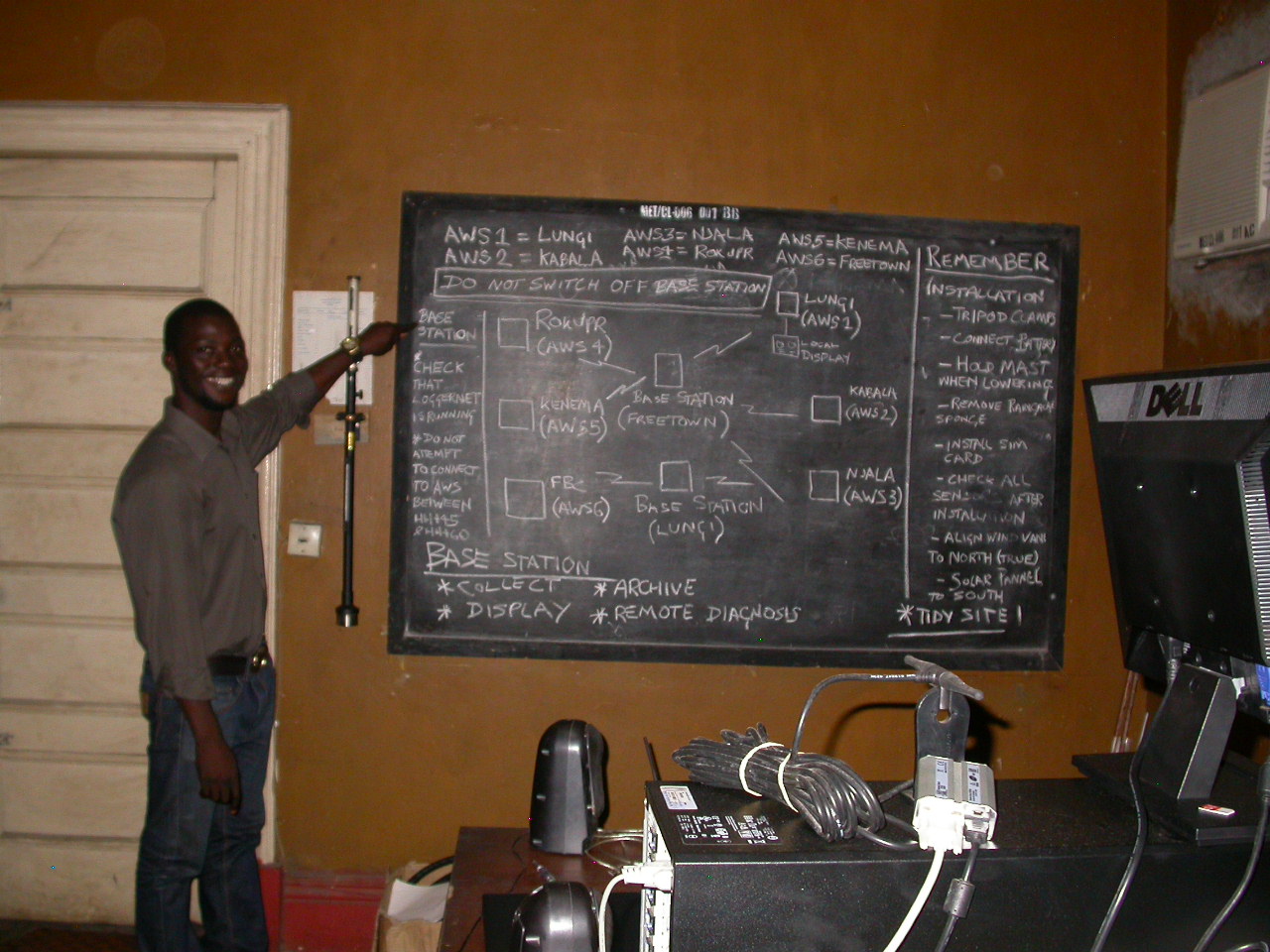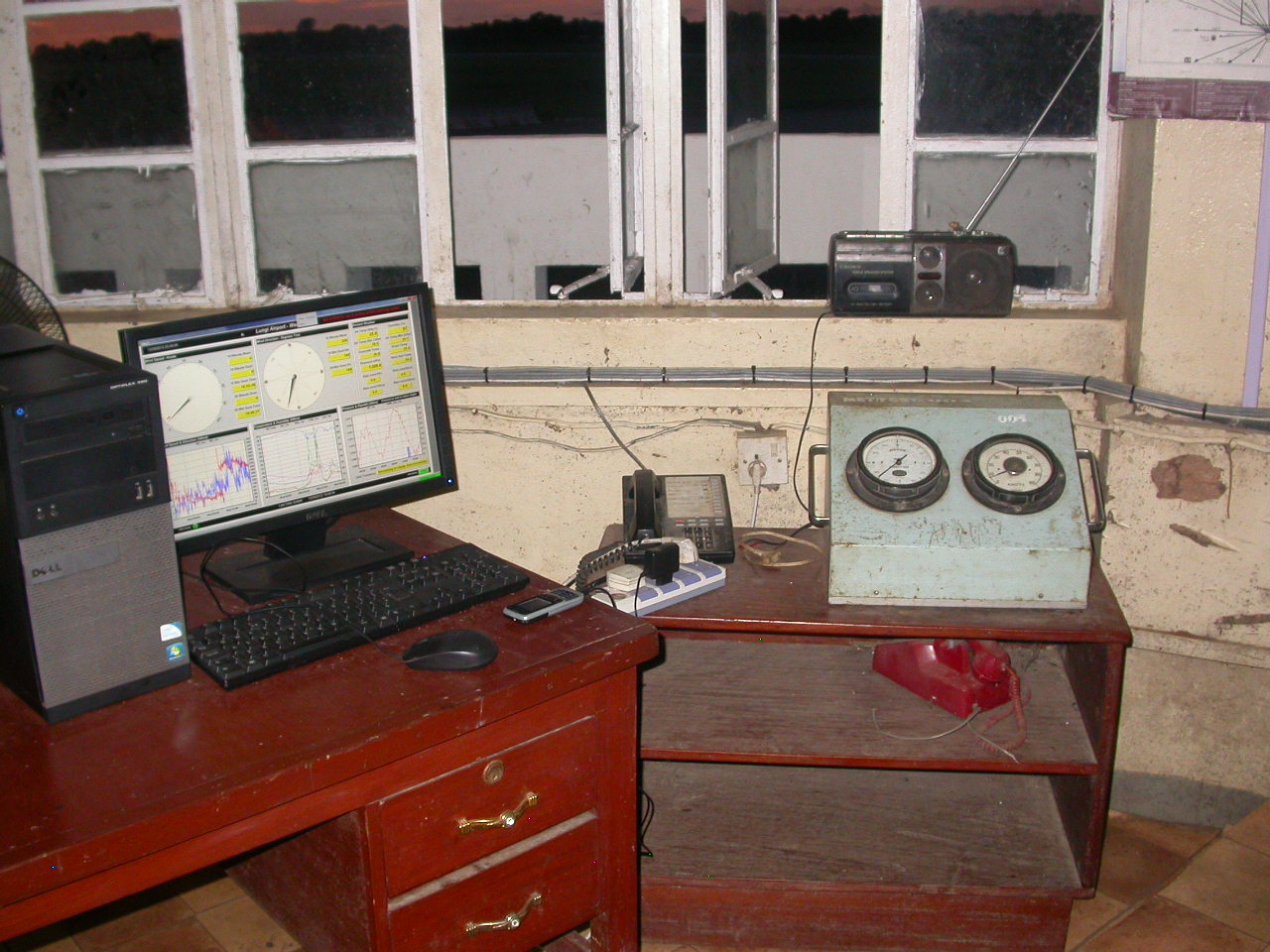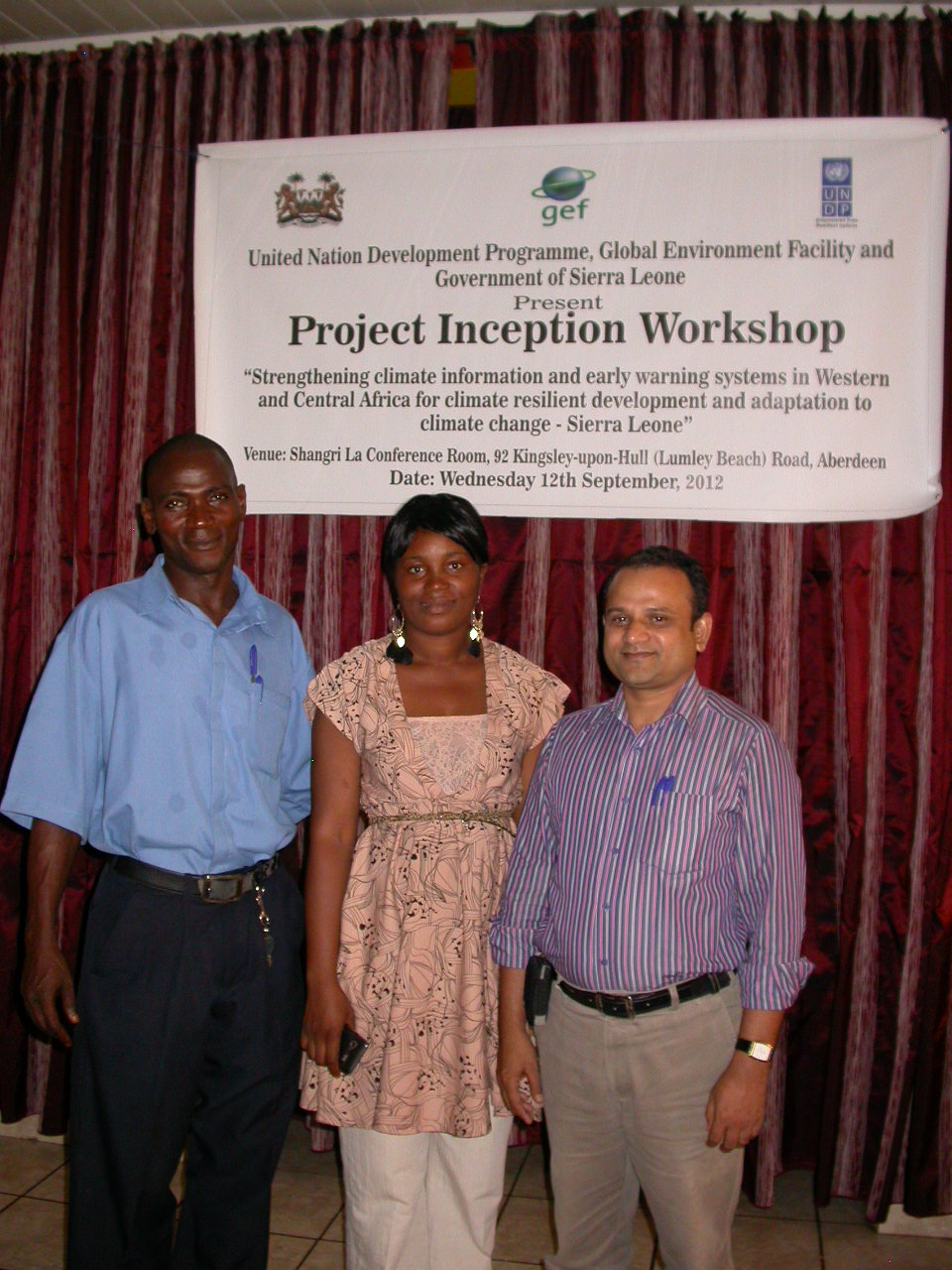Strengthening Climate Information and Early Warning Systems in Sierra Leone
Project Overview
The project, "Strengthening Climate Information and Early Warning Systems for Climate Resilient Development and Adaptation in Sierra Leone", responds to priorities and actions identified in the NAPA of Sierra Leone which articulate the need for securing, transferring and installing critical technologies, as well as developing the necessary systems for climate change-related information to permeate into decision-making processes. The technologies required to achieve these aims will increase the capacity of the national early warning network to forewarn and rapidly respond to extreme climate events.
The NAPA clearly identifies a priority project on Early Warning Systems (EWS) along with projects associated with Food security, Energy, Water resources and Terrestrial ecosystems. The EWS project is not associated with any one particular sector and is expected to be relevant to multiple sectors, including food/agriculture, water management, health, infrastructure, coastal zones and energy.
For updates on UNDP Early Warning Systems and Climate Resilient Development projects in Africa, visit the UNDP-EWS Africa Blog.
Project Details
This project is fully in line with LDCF/SCCF focal area objective 2 "Increase adaptive capacity to respond to the impacts of climate change, including variability, at local, national, regional and global level"and objective 3: Promote transfer and adoption of adaptation technology. It is specifically aligned with outcomes linked to these objectives including increased knowledge and understanding of climate variability and change-induced risks at country level and in targeted vulnerable areas, strengthened adaptive capacity to reduce risks to climate-induced economic losses, successful demonstration, deployment, and transfer of relevant adaptation technology in targeted areas and enhanced enabling environment to support adaptation related technology transfer.
The project outcomes are closely aligned and coordinated with efforts already underway within Sierra Leone to promote development which is resilient to climate change at the national and local levels. The project is focused on strengthening the capacity of national and sub-national entities to monitor climate change, generate reliable hydro-meteorological information (including forecasts) and to be able to combine this information with other environmental and socio-economic data to improve evidence-based decision-making for early warning and adaptation responses as well as planning.
The proposed project will be implemented at the country level by the lead Ministry mandated to advance climate monitoring including management of climate data in full collaboration with other relevant line Ministries who rely on the information for planning purposes (Disaster Management, Agriculture, Water, Finance and Planning etc). Sub national authorities (Provincial and/or District officers, Municipalities, civil society (women and youth associations, NGOs, media, farmers' associations) and the private sector will all also be important stakeholders (as end users) and will be provided with the space and opportunity to contribute to the design of the project in each country.
The link between this project strategy and the NAPA is centered on a common goal of informing climate resilient development planning and sector management through improved national systems that generate relevant climate information. Sierra Leone's number 1 priority NAPA intervention is the project, "Develop an Early Warning System in Sierra Leone". This project would "build the capacity of the Sierra Leone Meteorological Department in order to enable it properly monitor weather systems and climate and in particular to be in a position to provide "Early Warning of Imminent Hazardous Weather or Climate." In addition, the country’s number 20 priority intervention is, "Establishment of a National Sea-Level Observing System for Sierra Leone".
Source: UNDP Sierra Leone Project Identification Form (May 22, 2012)
Key Results and Outputs
- Outcome 1: Enhanced capacity of national hydro-meteorological (NHMS) and environmental institutions to monitor extreme weather and climate change.
- Output 1.1: Procurement and installation or rehabilitation (in case of existing) of approximately 10+ hydrological monitoring stations with telemetry, archiving and data processing facilities.
- Output 1.2: Procurement and installation or rehabilitation of 20+ meteorological monitoring stations with telemetry, archiving and data processing facilities.
- Output 1.3: Procurement and installation or rehabilitation of radar for monitoring severe weather.
- Output 1.4: Procurement and installation or rehabilitation of upper air monitoring stations.
- Output 1.5: Procurement and installation or rehabilitation of satellite monitoring equipment to receive real time climate and environmental information.
- Output 1.6: Training of at least 3-5 officers to maintain and repair equipment, computer infrastructure and telecommunications
- Outcome 2: Efficient and effective use of hydro-meteorological and environmental information for making early warnings and long-term development plans.
- Output 2.1: NHMS capacity to make and use climate forecasts (on daily to seasonal, as well as medium- to long-term timescales) is strengthened by training at least 4 forecasters
- Output 2.2: Tailored sector-specific early warning products that link climate, environmental and socio-economic information on a range of timescales are developed, based on identified user needs.
- Output 2.3: National capacity for assimilating forecasts and monitoring into existing development planning, PRSPs and disaster management systems is built.
- Output 2.4: Communication channels and procedures for issuing warnings (through both governmental and non-governmental agencies) are enabled (e.g. radio, newspapers, mobile phones, television etc.).
- Output 2.5: Plan for sustainable financing for the operation and maintenance of the installed EWS developed and implemented.
- Outcome 3: All components of implemented EWS are able to function as an integrated system within and between countries
- Output 3.1: Technical guidance and training delivered to all relevant country agencies on selection and identification of cost effective technologies, including climate monitoring equipment, tailoring of climate information and generation of technically robust warning messages.
- Output 3.2: Key stakeholders trained on installation of new equipment, warning products and systems in coordination with other ongoing initiatives, including supporting and strengthening EWS related activities (equipment purchases, telecommunications, computer systems, decision support tools) implemented through other initiatives.
Source: UNDP Sierra Leone Project Identification Form (May 22, 2012)
Reports and Publications
ProDocs
Project Brief / Fact Sheet
News article
Sierra Leone: UNDP Ends Workshop On Climate Change Adaptation
PIFs
Monitoring and Evaluation
Project Start:
- Project Inception Workshop: will be held within the first 2 months of project start with those with assigned roles in the project organization structure, UNDP country office and where appropriate/feasible regional technical policy and programme advisors as well as other stakeholders. The Inception Workshop is crucial to building ownership for the project results and to plan the first year annual work plan.
Daily:
- Day to day monitoring of implementation progress: will be the responsibility of the Project Manager, based on the project's Annual Work Plan and its indicators, with overall guidance from the Project Director. The Project Team will inform the UNDP-CO of any delays or difficulties faced during implementation so that the appropriate support or corrective measures can be adopted in a timely and remedial fashion.
Quarterly:
- Project Progress Reports (PPR): quarterly reports will be assembled based on the information recorded and monitored in the UNDP Enhanced Results Based Management Platform. Risk analysis will be logged and regularly updated in ATLAS.
Annually:
- Annual Project Review/Project Implementation Reports (APR/PIR): This key report is prepared to monitor progress made since project start and in particular for the previous reporting period (30 June to 1 July). The APR/PIR combines both UNDP and GEF reporting requirements.
Periodic Monitoring through Site Visits:
- UNDP CO and the UNDP RCU will conduct visits to project sites based on the agreed schedule in the project's Inception Report/Annual Work Plan to assess first hand project progress. Other members of the Project Board may also join these visits. A Field Visit Report/BTOR will be prepared by the CO and UNDP RCU and will be circulated no less than one month after the visit to the project team and Project Board members.
Mid-Term of Project Cycle:
- Mid-Term Evaluation: will determine progress being made toward the achievement of outcomes and will identify course correction if needed. It will focus on the effectiveness, efficiency and timeliness of project implementation; will highlight issues requiring decisions and actions; and will present initial lessons learned about project design, implementation and management. Findings of this review will be incorporated as recommendations for enhanced implementation during the final half of the project's term.
End of Project:
- Final Evaluation: will take place three months prior to the final Project Board meeting and will be undertaken in accordance with UNDP and GEF guidance. The final evaluation will focus on the delivery of the project’s results as initially planned (and as corrected after the mid-term evaluation, if any such correction took place). The final evaluation will look at impact and sustainability of results, including the contribution to capacity development and the achievement of global environmental benefits/goals. The Terminal Evaluation should also provide recommendations for follow-up activities.
- Project Terminal Report: This comprehensive report will summarize the results achieved (objectives, outcomes, outputs), lessons learned, problems met and areas where results may not have been achieved. It will also lie out recommendations for any further steps that may need to be taken to ensure sustainability and replicability of the project’s results.
Learning and Knowledge Sharing:
- Results from the project will be disseminated within and beyond the project intervention zone through existing information sharing networks and forums.
- The project will identify and participate, as relevant and appropriate, in scientific, policy-based and/or any other networks, which may be of benefit to project implementation though lessons learned. The project will identify, analyze, and share lessons learned that might be beneficial in the design and implementation of similar future projects.
- Finally, there will be a two-way flow of information between this project and other projects of a similar focus.
Source: UNDP Sierra Leone Project Identification Form (May 22, 2012)








